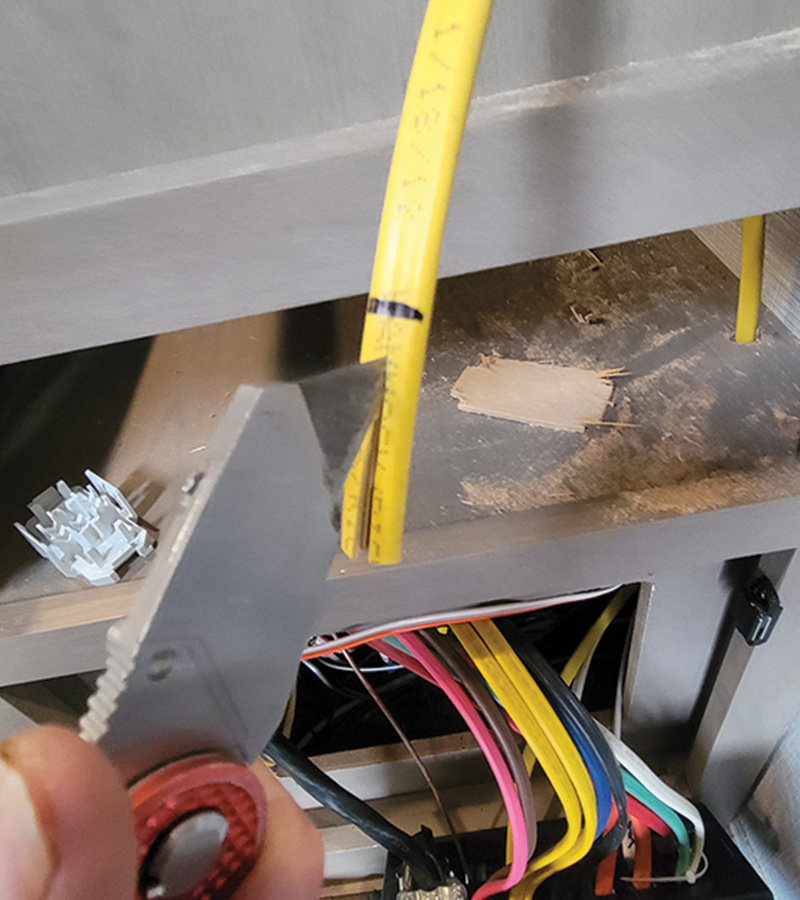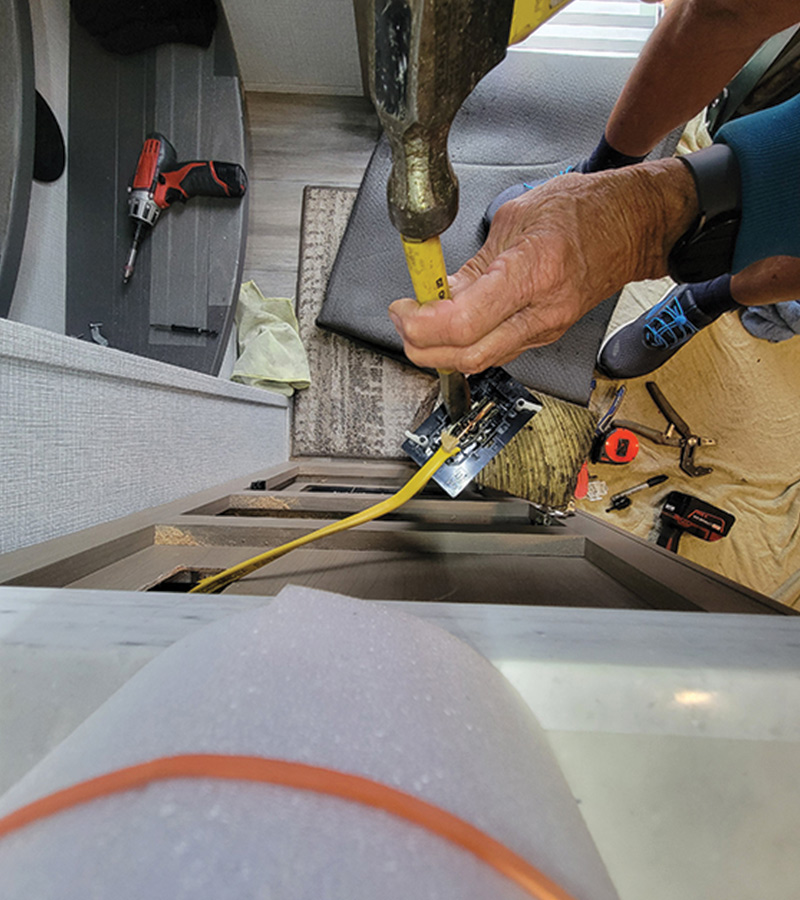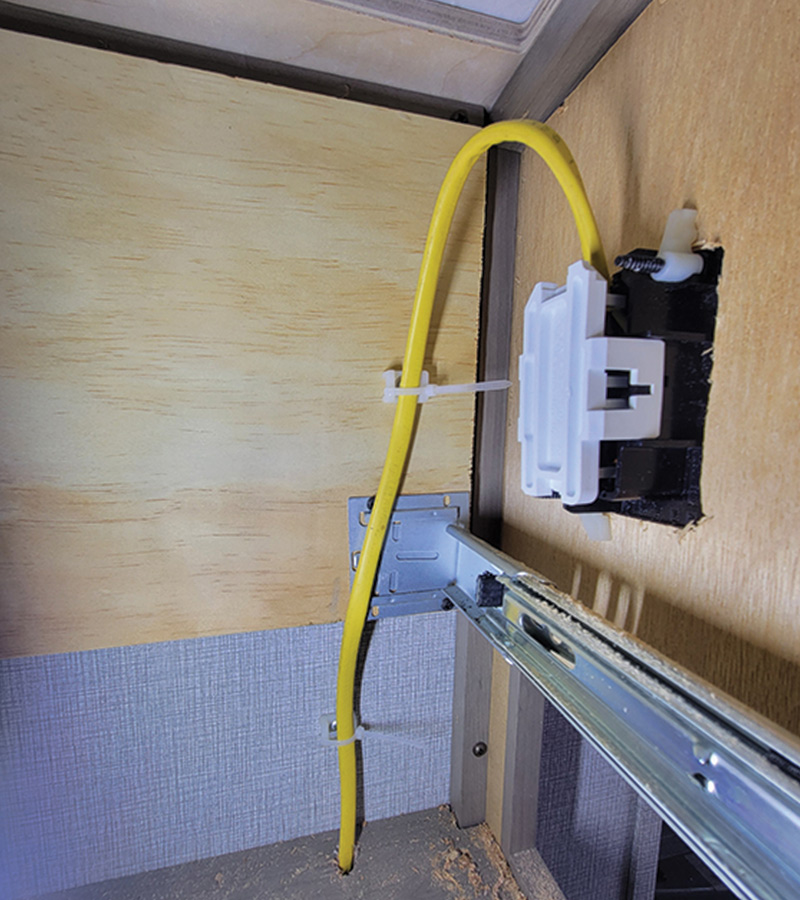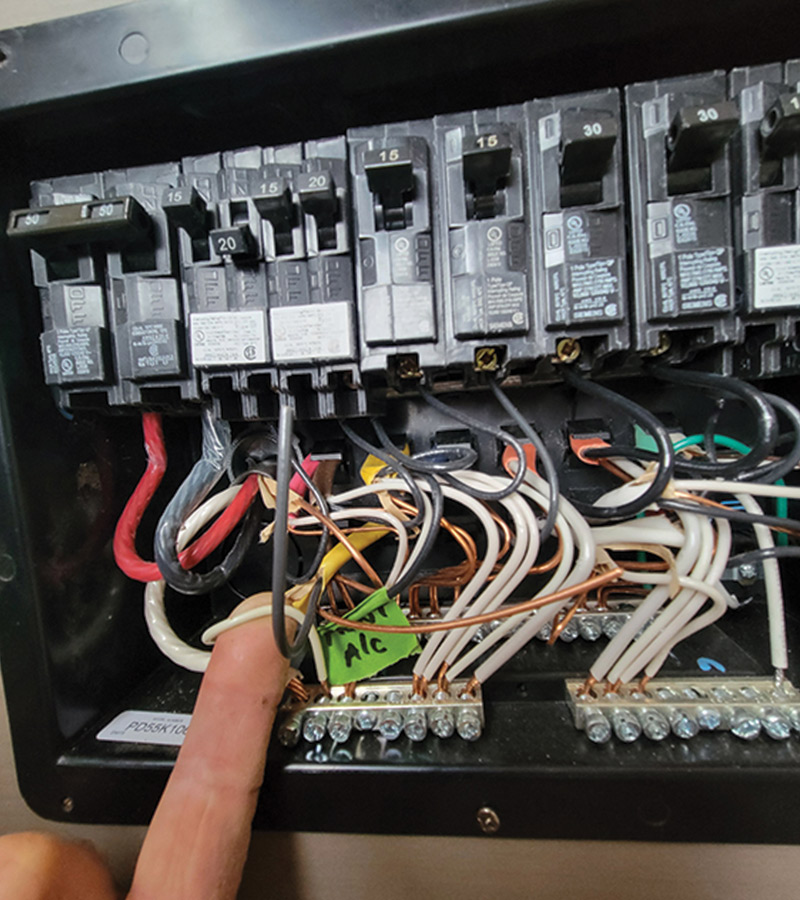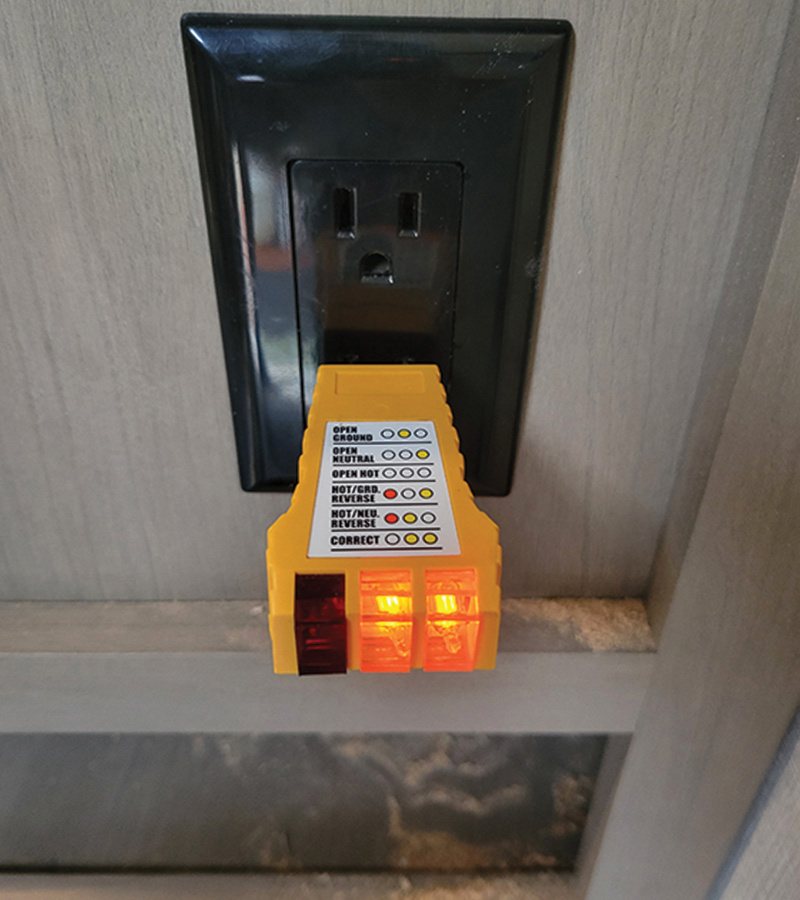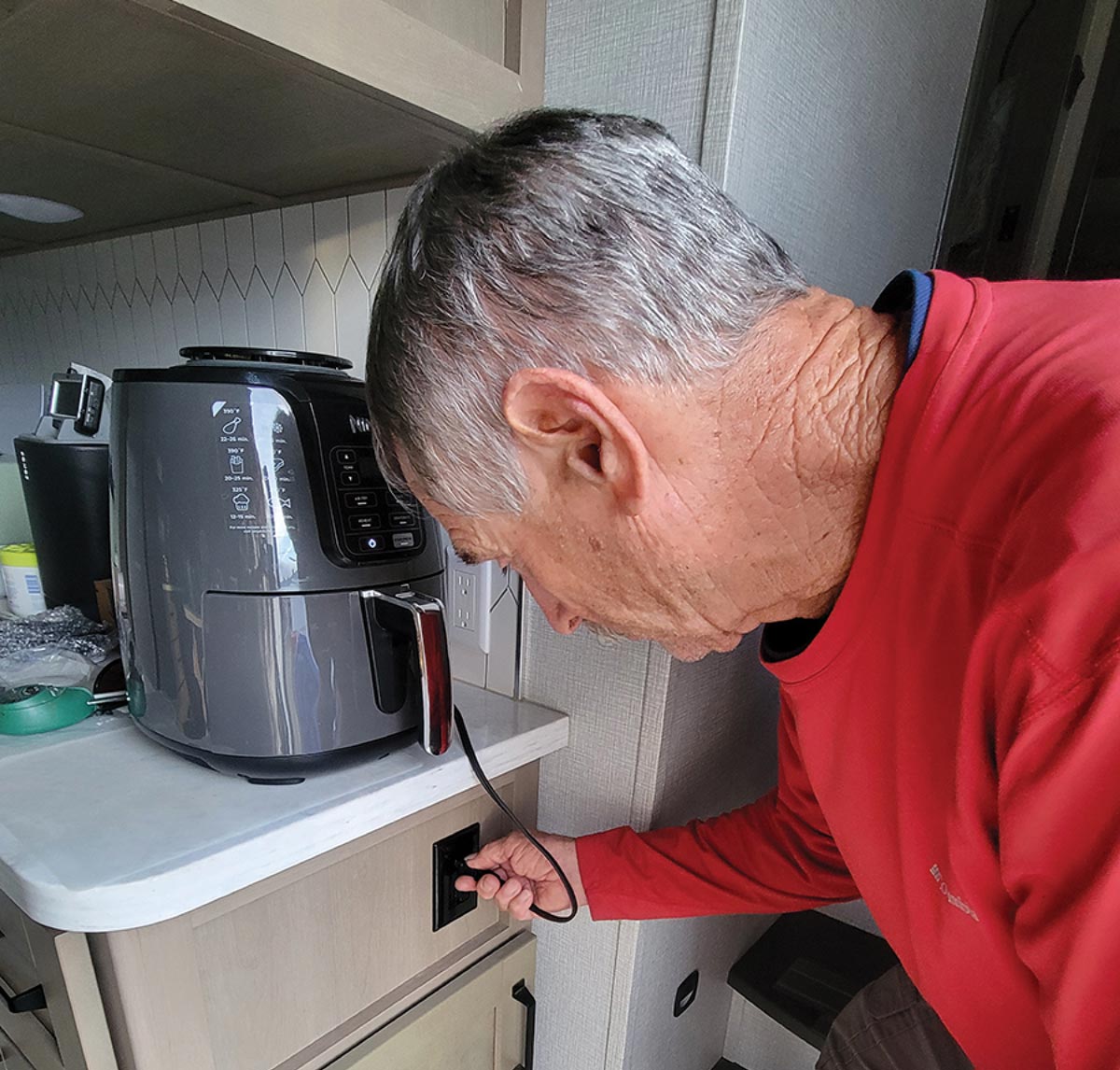

ver the years, RV owners have become spoiled with the proliferation of electric appliances. From the health benefits of cooking in an air fryer to baking a Thanksgiving turkey or using a portable electric heater, RVers have become reliant on 120-volt AC powered appliances — and the industry has responded with a greater selection of all-electric RVs.
For those of us without an all-electric RV, however, ganging 120-volt AC outlets can make it difficult to operate multiple appliances at the same time. For example, in my fifth wheel, the electric supply in the kitchen and the hutch was totally inadequate. All the outlets were tied into a single 15-amp breaker, which made it difficult to run two appliances at the same — unless power consumption was limited to maybe 700-800 watts. It didn’t take long to realize that I needed to add another circuit in the hutch area.
In my fifth wheel, the power distribution center was on the end of the hutch where I keep the air fryer, laptop computer and printer. Adding a 120-volt AC outlet in the wall right above the distribution panel made the most sense, since routing the wiring was not going to be complicated. There’s no front air-conditioner in my fifth wheel (I ordered it that way to allow for a fan in the bedroom for boondocking jaunts), which made it easy to use the 20-amp circuit that was already in the panel. If the panel is filled — usually with circuits dedicated to the second air-conditioner and/or washer/dryer —you can replace one of the other breakers with a tandem-style counterpart. Tandem breakers are available at hardware and home improvement stores.
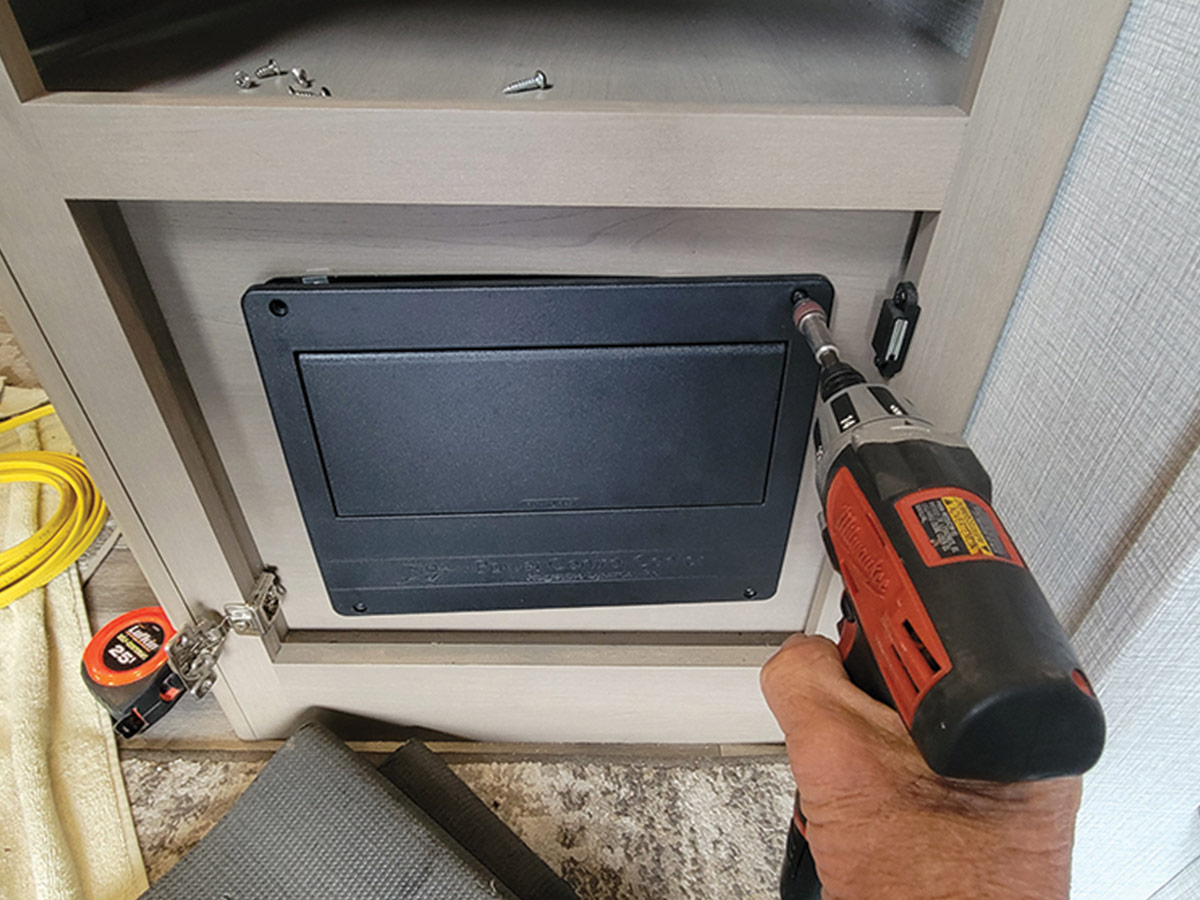
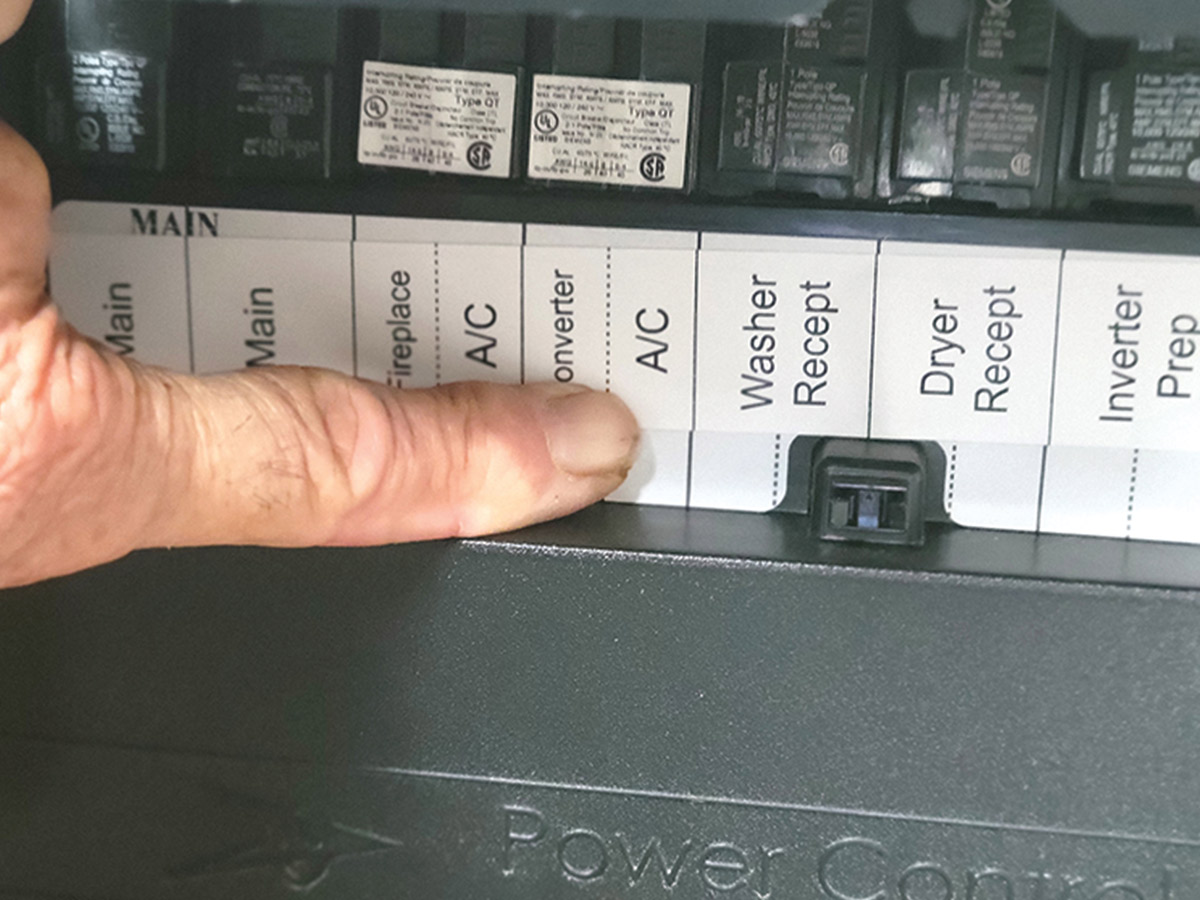
The next process was to drill a hole in the shelf above the distribution panel — also with the step-bit — and run the Romex to the back of the distribution panel. Fortunately, there was an extra inlet with a set of jaws to provide stress relief for the Romex should the distribution panel need to be pulled out in the future.
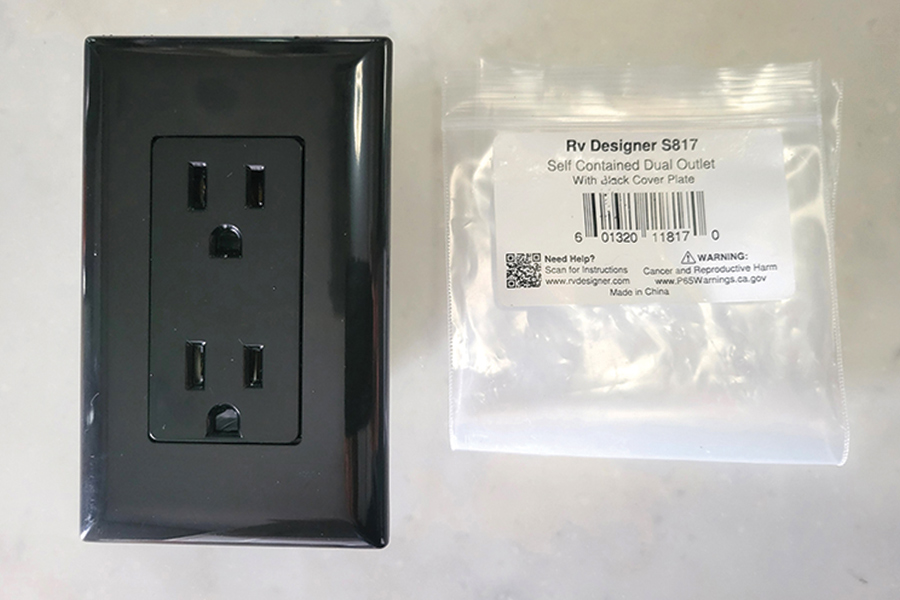
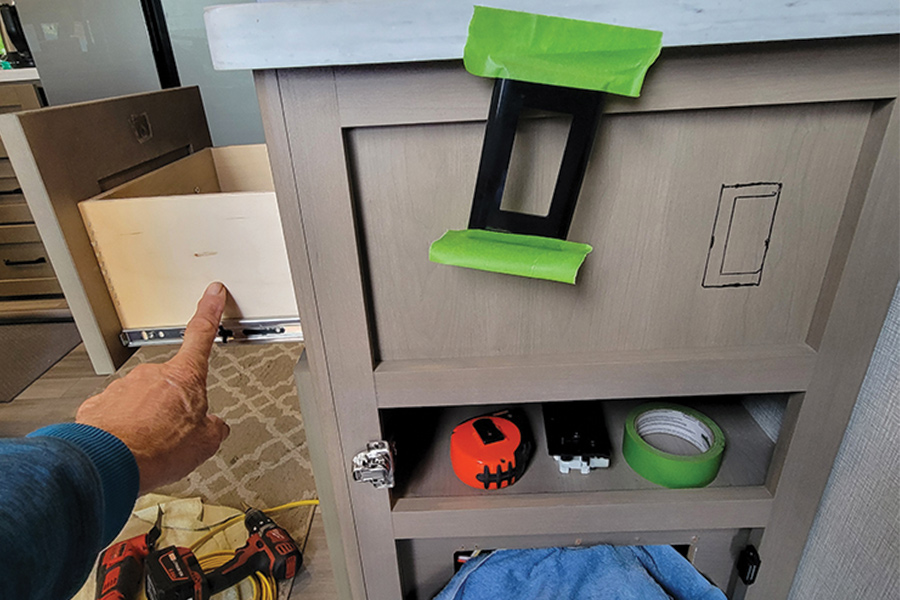
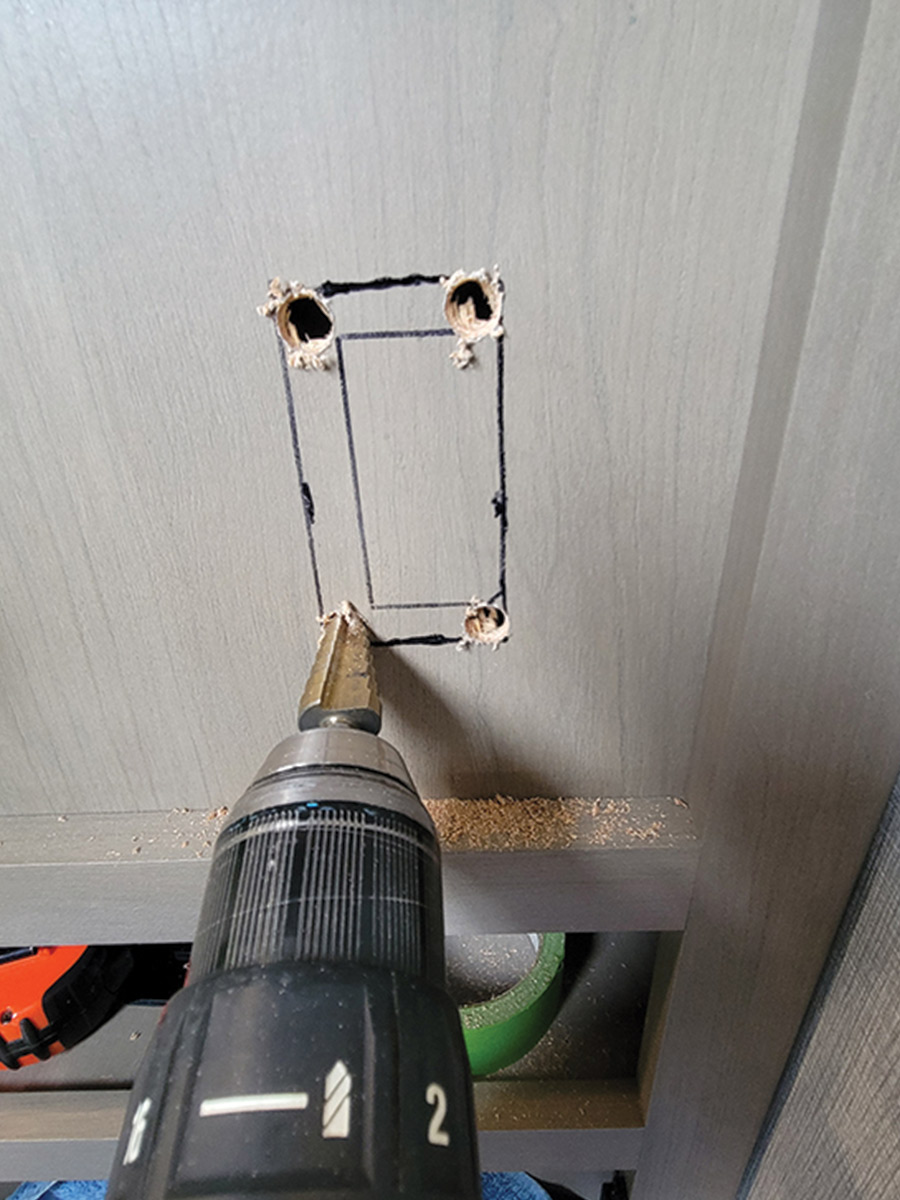

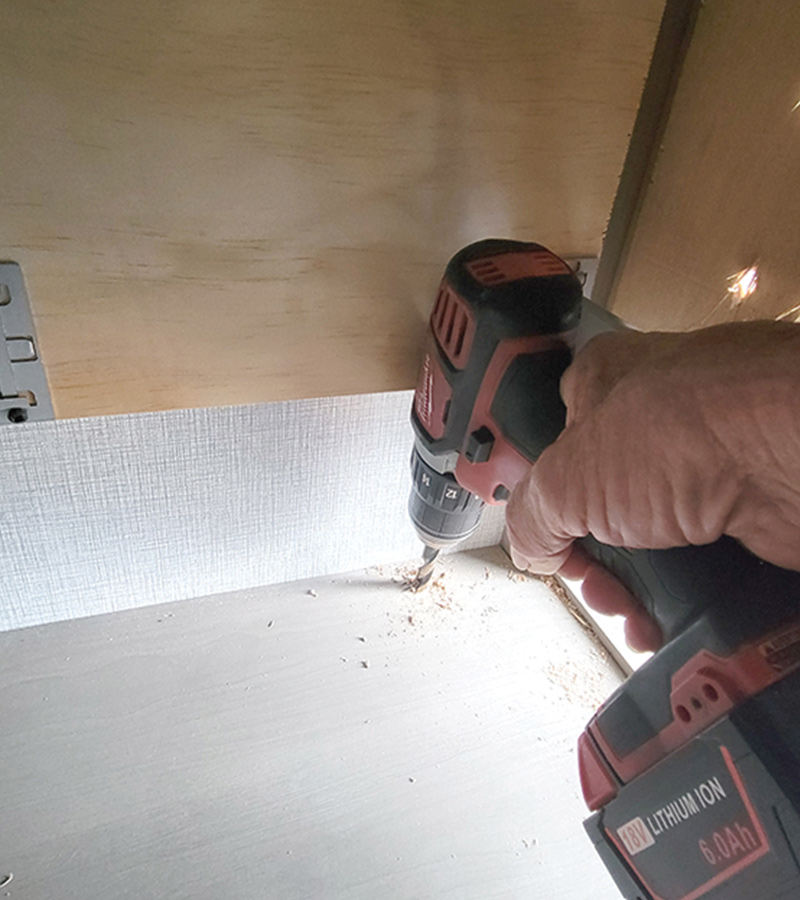

Thinking outside the box, I rummaged through my tools and found a small chisel that worked. All it took was one whack of the hammer for each wire. Now it was just a matter of clamping the cover on the back; again, my makeshift lumber work top — covered with a cloth to prevent damaging the outlet — came in handy.
After double checking all of the connections, I restored power and tested the outlet for polarity. Keep in mind that this project assumes you have 50-amp service, which is the case if the RV is equipped with two air-conditioners. Now I have plenty of power to run my air fryer and microwave at the same time without overloading the circuit.
